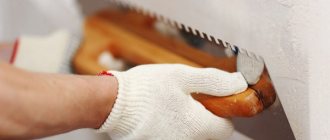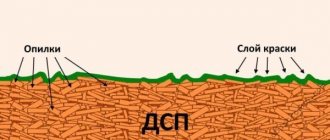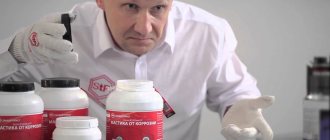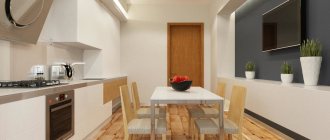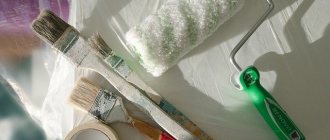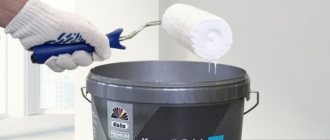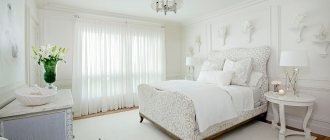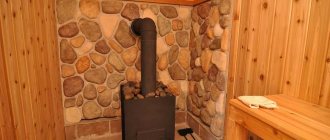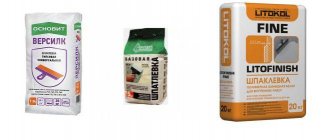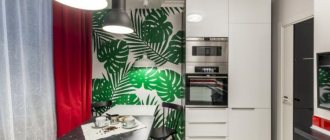Non-woven fabrics for painting are an ideal solution for those who value individuality and like to change the atmosphere around them. This type of wall covering opens up many possibilities for the expression of imagination. Modern brands guarantee that non-woven wallpaper can be repainted 10-15 times before painting. The BackGround online store offers non-woven wallpaper for painting: a huge assortment, various styles and patterns, a wide range of prices.
Non-woven fabrics for painting are popular among European designers - in addition to many textures and stylistic solutions, this finish is wear-resistant and looks impressive in any interior.
Rating of wallpaper colors
Repair is required over time for any interior, no matter how fashionable it was at the time. This problem can be solved by using paintable wallpaper when decorating a room. Manufacturers offer a large selection of suitable paints and varnishes, making it possible to update the color of the walls in accordance with your wishes.
The VyborExperta.ru team has compiled a rating of wallpaper paints, which is based on customer reviews. A total of 10 nominees were included in the review. Studying the responses made it possible to determine the characteristics that interested buyers more often than others. These were:
- Type of wallpaper;
- Type of paintwork depending on the composition and final effect;
- Moisture resistance;
- Drying speed.
Reviews were also used to determine the strengths and weaknesses of the nominated products.
The best water-based paints for painting wallpaper
Water-based wallpaper paint for painting is a popular option due to its low price. The advantages of this group of coatings: accessibility and ease of use. But she has a negative attitude towards wet cleaning and can fade in the sun. The paint is usually used for indoor work; if necessary and desired, it is used for painting decorative plaster, as well as ceilings.
Finncolor Oasis Wallpaper
Plastic, not visually heavy, it looks good on flat surfaces and beautifully emphasizes the relief pattern.
Water-dispersive paint with a pronounced matte effect is used on any surfaces with various materials and for treating embossed wallpaper. The thoughtful formula includes components with high durability. You can buy the product in containers of any size: from small cans for painting parts to large containers in case of large-scale repair work.
The paint is universal in purpose and easy to use. It does not emit toxic substances and is not harmful to health. The painted surface receives a rich shade without color fluctuations or glare, and looks elegant and stylish.
Walls are not afraid of impacts, cracks, germs and moderate humidity after painting. Wear resistance and durability have been confirmed in practice by reviews from many customers. The product contains moisture-resistant additives, so it is approved for use in the kitchen. You can wash the surface with soap solutions. The variety of tinting shades is extremely large.
Advantages:
- High quality finish;
- Possibility of tinting;
- Practical, safe, environmentally friendly products;
- Good texture, no smudges;
- Effectively emphasizes the relief pattern of the wallpaper;
- Moisture resistance, adaptability to washing;
- Affordable price.
Flaws:
- You can buy a counterfeit one.
The only disadvantages can be defects that arise when purchasing a fake and violation of the rules for preparing the surface for the upcoming painting.
Alpina Practical interior
The product belongs to the German company Alpina, which produces a line of economy-class interior paints. The company's products meet international quality standards. The company produces a wide range of paints and is able to satisfy the needs of any consumer. The main feature of the product: environmental friendliness and durability. The formula contains tens of times less volatile organic compounds than required by European standards.
The nominated product is a water-dispersion composition. Designed for interior work. In addition to painting wallpaper, it can also be used on other surfaces - drywall, concrete, brick, plaster. Suitable for professional use.
Application method: spray, roller or brush. Working with the composition is not difficult: it is easy to apply, lays down smoothly and does not flow. Can be diluted with water and tinted. Paint is used economically. The painted surface does not fade and pleases the eye with bright colors for a long time.
Advantages:
- Good quality coating;
- Does not leave streaks when painted;
- Gives a matte finish;
- Easy to apply, dries quickly;
- Eco-friendly;
- Has no smell;
- Affordable price.
Flaws:
- Not sold everywhere.
Choosing a color
General Tips
As a rule, a white base is sold on store shelves, and on stands there are many colors displayed - small pieces of paper with color options. Having chosen a manufacturer, you need to decide on the shade. Next, using a special machine, pigment is added to the white base in the required quantity - everything is ready.
A more ancient way to get the desired color is to mix everything at home. To do this you will need a base and a bottle of pigment. In this option, there is a big risk of making a mistake with the shade, pouring a little more pigment than necessary. Plus, this is not very convenient physically - if you are a fragile girl, and you have to mix 5 liters of paint, you simply may not have enough strength to mix the composition well, and you will end up with streaks and sudden changes in color. Even if you managed to do everything perfectly, it’s not a fact that the second can of paint will turn out to be exactly the same shade. Therefore, we still recommend making the paint immediately in the store. You just need to enter a special code that is assigned to a particular shade, and then, as they say, it’s a matter of technique, in the literal sense of the word. A special device will quickly prepare any amount of the mixture.
Unsplash
Which tone is better?
Of course, the shade of the walls is a purely individual choice for everyone. But, nevertheless, there are several basic rules when purchasing. First of all, look at the footage; if you have a cramped Khrushchev, you will have to abandon overly bright and dark colors in favor of a light, pastel or even white coating. If your soul requires colored walls and a black ceiling, well, experiment. But in this case, balance the brightness with neutral textiles or furniture. Give up the decor - let the colorful walls take over its function.
Unsplash
Windows facing north and bringing nothing into the house except dull gray light for several hours a day must definitely be adjacent to the color yellow. Let the bright sun at least be present in the interior. The trend of recent seasons is a monochrome interior. Textures will help make it not boring and multifaceted. Play with surfaces, combine matte and gloss, add another tint. In general, try on the role of an artist!
Unsplash
Gold and silver tones in the interior usually raise a lot of questions and debates. How to include them in the decoration so that it does not become too pretentious? Is it worth using such shades at all? Experts answer unequivocally - yes, it’s worth it. When applied correctly, they will give the effect of antiquity, small abrasions and cracked surfaces - indispensable for classic interiors, Empire and Art Deco styles. To create this effect, you will need a hard brush with which to apply the composition. It is important not to overdo it with the quantity - after all, you are only creating an effect, and not completely painting the surface. The difference in textures will help to enhance it - choose a matte texture as a base, and create a glossy texture for golden highlights.
Unsplash
- Apartment
What are paints and why should they not be neglected when decorating walls?
The best latex paints for painting wallpaper
Latex paint is characterized by high resistance and long service life. It costs more than other types. The coating does not produce rich, bright shades, but its consumption is very low. Dries quickly. Durability depends on the gloss level. The VyborExperta.ru team selected four nominees for the category.
V33 Blanc Perfection
The rating of wallpaper paints continues with V33 “Blanc Perfection”, intended for use exclusively indoors. The product contains a water-based acrylic mixture, titanium white, as well as various fillers provided by the technology. The addition of Carrara marble gives a flawless white color. The painted surface does not turn yellow within 10 years of use.
The product is suitable for painting wallpaper in any room in an apartment or house, including bedrooms and children's rooms. Can be used on surfaces of any material. Apply paint with a brush or roller. No spray technique is used. The paint can be used as a base for tinting.
The manufacturer recommends applying only one layer of dye, indicating this in the inscription on the can. But reviews indicate that to achieve the desired effect, you need to apply at least two layers with an interval of 6 hours. After drying, the surface becomes pure white with a matte velvet effect. There are no streaks or drips. The dye finally hardens after 30 days.
The coating is resistant to intense impact. Mild detergents or just soapy water are suitable for care. To remove dirt, use a sponge or any soft cloth without surface lint.
Advantages:
- No unpleasant odor;
- The texture smoothes the surface well and hides cracks;
- Can be tinted;
- Does not emit toxic substances, environmentally friendly;
- You can clean the tools after use with plain water;
- Dries quickly.
Flaws:
- Not detected.
Lakra for walls and ceilings
The product is manufactured at a Russian enterprise using German technology. Characterized by high quality indicators. It is made on the basis of water-based acrylic latex, which has good vapor permeability: the surface breathes and at the same time is not afraid of moisture.
The paint is used for interior and exterior work. You can paint not only wallpaper, but also walls, facades, fences, bathrooms and kitchens. The paint can be tinted, which significantly expands the capabilities of the nominee. It is applied by roller, brush and spray. If necessary, dilute with water to the desired consistency.
The paint has high decorative qualities. Among other advantages, it is worth noting good coverage and strong adhesion to the base of the surface to be painted. After application, you get a white matte, smooth coating that is not afraid of moisture. Therefore, you can also practice wet cleaning.
The paint is stored in a well-closed container for 2 years at a temperature of +5-35°C without loss of properties. Withstands single freezing down to -35°C. This may be important when transporting in winter. But after freezing, the paint is brought into a warm room, thawed and mixed well until smooth.
The surface is prepared before painting: it is cleaned of old paint, dust and dirt. Wash off the whitewash with soapy water and wait until it dries completely. Surfaces with old oil paint or enamel are sanded to remove dust. Large cracks are sealed with putty, sanded and primed.
Advantages:
- High quality;
- Snow white base color;
- Possibility of using color scheme;
- Good hiding power;
- Dense, does not get dirty.
Flaws:
- Does not wash off (if applied in the wrong place, you can’t wash it off).
Marshall Export-7
The product is characterized by a high-quality composition, good performance properties and the ability to withstand high humidity. The latter allows the nominee to be classified as washable paint. Production is located in Russia.
The nominee is characterized by good wear resistance. Even when wiping off dirt with a hard sponge, the appearance of the surface does not change. The product is suitable for all types and types of wallpaper, including glass wallpaper. The high covering properties deserve attention. When painted in two layers, the surface looks perfectly smooth.
Working as a team if you have no experience or not enough of it is quite difficult. It is initially thick, and therefore does not flow or splash. That's a plus. But it has a gel consistency, and therefore “smearing” it is problematic - you will need to adapt. It is more convenient to paint wallpaper with a roller. The brush will increase consumption.
The paint gives a matte surface with glossy highlights. Water after painting is not absorbed and does not leave stains. The paint can be tinted with Dulux dyes.
Advantages:
- Water is used as a solvent;
- Moisture-resistant, washable;
- Can be tinted to any desired shade;
- Covers surfaces well;
- Dries quickly;
- You can paint any wallpaper.
Flaws:
- Difficult to apply.
Dufa Mattlatex
Russian-made products Dufa Mattlatex made using German technology. Interior, and therefore intended only for interior work. Available in different volumes - 2.5, 5 and 10 liters.
The dye has a certificate allowing use in children's and medical institutions. This confirms the environmental safety of the nominee.
The paint can be tinted. It is applied by spray, roller and brush, and dries within a day.
Advantages:
- Can be diluted with water;
- Can be tinted well in any shade;
- Easy to apply;
- Meets all characteristics declared by the manufacturer.
Flaws:
- Not identified.
Useful tips
It is recommended to paint a piece of wallpaper, wait until the paint dries, apply it to the surface that you plan to paint and see how this shade will look on this wall. You can also tint a small jar of paint in the store in the chosen shade and look around.
If adjacent planes cannot be sealed with masking tape, for example, when the base is weak to protect the surface, use a façade spatula. The spatula blade is placed in a corner, the plane is pressed tightly against the surface to be protected, and the desired area is carefully painted with a narrow roller or brush.
There is nothing complicated in painting wallpaper, as in any other construction work, but accuracy and adherence to the manufacturer’s recommendations are important.
How to choose paint for wallpaper
If we talk about choosing paint for painting wallpaper, then it is necessary to take into account many factors. There are several leading characteristics.
Paint type
Manufacturers offer three types of paint:
- Acrylic. Gives good color saturation, waterproof, dries quickly. Vapor-permeable, prevents the accumulation of moisture on the surface of the walls, which eliminates the formation of mold due to high humidity. Recommended for non-woven fabric, but also suitable for paper and glass wallpaper.
- Water-based. It does not withstand wet cleaning and quickly loses its brightness in the sun.
- Latex. Resistant, durable. It dries very quickly, so it is applied in a thin layer. Doesn't give rich color. Varies in gloss content.
The choice of paint is influenced not only by the composition. The offered varieties give different effects after dyeing. The most commonly used types are:
- Glossy. Reflects light, creates visual volume - therefore often used to “enlarge” small rooms - and adds natural lighting. Well suited for rooms with windows facing north. Looks best on smooth surfaces.
- Semi-gloss. Universal - suitable for any room. Requires a well-leveled surface. Recommended for glass wallpaper and paper.
- Matte, semi-matte. They set the mood for calm, so they are often used in bedrooms and living rooms. It hides unevenness on the wall well.
Type of wallpaper
Manufacturers offer the following types of wallpaper:
- Paper. They are produced in the format of two - sometimes three-layer canvases. Eco-friendly. Options with deep embossing are successful. The disadvantage is the need to match the drawing. They mask surface unevenness well. The coating is dense, durable, with good performance properties. Three-layer fabrics perform somewhat better - they are able to withstand numerous stains.
- Vinyl on non-woven base. Two-layer: top – foamed vinyl, backing – non-woven fabric. Width – 1 meter. The coating does not get wet, does not tear, and is durable and even. Hides surface defects well. Dirt can be easily removed with a damp sponge. They can imitate different surfaces - ceramics, fabric, wood and others. Due to its high adhesion, it fits well on concrete, drywall, and wood. But you need to be careful, as vinyl reacts strongly to mechanical stress (it scratches easily).
- Non-woven. Durable, vapor permeable, moisture resistant, elastic. Initially white or with a slight yellowish tint. If desired, you can also find tinted canvases. They do not have a pronounced relief. They perfectly imitate fabrics, plaster, tree bark, and are also often designed using strict geometric or abstract patterns. Looks good in combined coloring. Not suitable for frequent repainting.
- Glass wallpaper. They are characterized by increased strength. They differ in visual volume and complexity of the design. The texture is clearly expressed, which allows you to use several colors at the same time. They come in white and tinted.
Simply smooth canvases also look good.
Moisture resistance
When choosing, this indicator must be taken into account. If you plan to periodically carry out wet cleaning, then take paint with high moisture resistance. These are acrylic and latex compositions.
Water-based paints have very low water resistance ratings. The coating does not hold up and becomes discolored.
Drying speed
The drying speed is indicated by the manufacturer in the instructions. But the indicator may be influenced by additional factors.
Pasting technology
Before you start gluing meter-long wallpaper on a non-woven base, you need to prepare the surface, which is first cleaned of old coating and dirt, defects are eliminated, wires are insulated so that the compound does not get on them, switches and sockets are unscrewed.
After applying the adhesive composition to the wall, you need to start applying the canvas from the top of the wall, and, pressing it against it, go down. After this, take a plastic spatula or rag, with the help of which the air is “expelled”, and the wallpaper is leveled, which helps to avoid the appearance of wrinkles in the future. This should be done from the middle of the canvas to the edges. In addition to the basic process of gluing the material, you should know and apply the following 5 steps.
Step 1 - mixing the adhesive composition
As previously mentioned, you need to buy wallpaper glue at a hardware store. We advise you to purchase a special product created for gluing this particular material on a non-woven basis. There are instructions on the packaging that should be strictly followed without experimenting with proportions.
Step 2 - cutting the blades
Before you get started, you need to measure the height of the walls from floor to ceiling in 4-5 different places. This should be done because this indicator can yield different results even in new houses. When cutting canvases, you should take the maximum height of the wall, adding a few centimeters for safety. If the material is a single color or without a pattern that does not require adjusting, then this simplifies the matter.
To cut, unwind the roll, draw a horizontal line with a pencil using the resulting indicator, and cut with a sharp knife or scissors.
Step 3 - marking on the wall and applying adhesive
One of the important rules when gluing rolls is maintaining a straight vertical line. When applying the first strip to the wall, you need to be especially careful, because, focusing on it, the remaining strips will be glued.
You should start marking the wall from the corner. Using a level, draw straight vertical lines along the entire wall with an indentation of 1 meter. The standard width of meter rolls is 106 cm, so 6 cm remains in stock.
Some manufacturers require that glue be applied only to the wall, while others advise that the wallpaper also be applied. Therefore, to avoid misunderstandings, you should first read the factory instructions. The next step is to thickly apply special glue with a roller to the wall, during which the entire surface is thoroughly coated. For hard-to-reach areas, use a small brush. The adhesive strip should be 5–10 cm larger than the width of the roll.
Step 4 - working with corners - correct joining
It is not recommended to glue meter-long non-woven wallpaper in solid strips in the corners; there is a high probability that they will lie unevenly. In this case, both with internal and external corners, you should proceed in a proven way. It is necessary to measure the distance from the last glued strip to the corner, adding 1.5–2 cm to it. After this, cut off a piece of wallpaper, apply glue and glue it. The next strip should be applied with an overlap onto the protrusion.
Non-woven wallpaper should be glued close to each other. It’s okay if the joint doesn’t work out at first. When straightening the wallpaper, thanks to the large amount of glue, it will slide well, so it can be easily “moved” to another strip.
Step 5 - gluing around the doorway
Gluing around a doorway is not as difficult as it may seem. If the wallpaper is plain, then the sides of the wall are glued first, leaving space above the door. After this, it is worth measuring and cutting the strip that needs to be joined to the adjacent one. If it overlaps, then the excess is cut off and only after the work has been done can the space above the door be filled.
With patterned wallpaper, you won’t be able to skip space; you’ll have to do everything sequentially, adjusting the pattern.
Which wallpaper paint is best?
You will decide for yourself what paint to use for your wallpaper, taking into account our recommendations when choosing a product.
The VyborExperta.ru team has identified the following rating nominees:
- Dulux Easy - acrylic, stain-resistant, water-repellent;
- Finncolor Oasis Wallpaper – water-based, forms a dense matte coating, withstands wet cleaning;
- V33 Blanc Perfection – latex, subject to tinting, base color – snow-white.
Paintable wallpaper is a good solution. But it is important to choose a coloring composition that matches the coating in order to obtain the desired effect.
